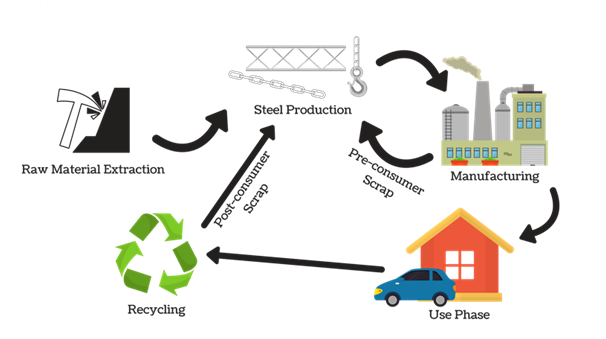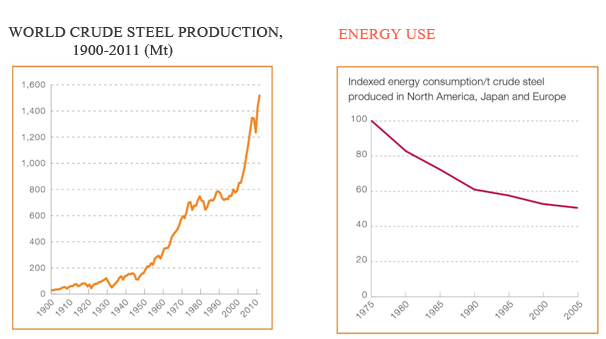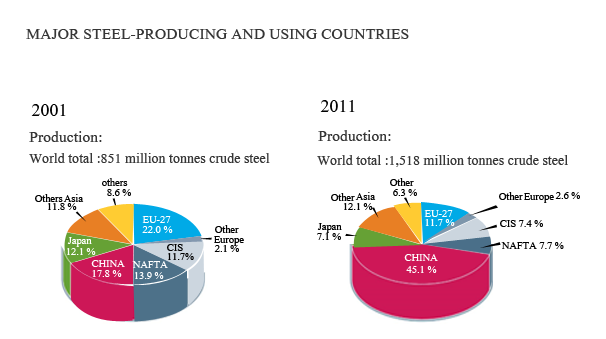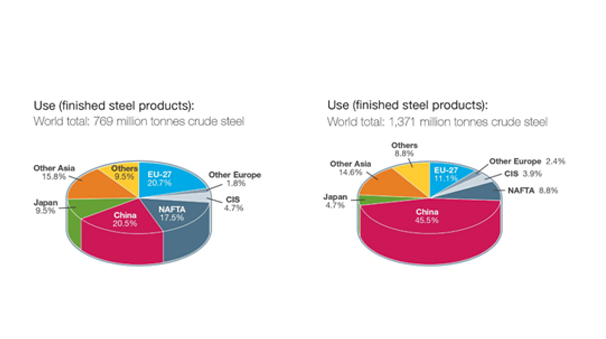MITO METAL CORPORATION
SUSTAINABLE STEEL:
At the core of a green economy | Carbon steel as the greener piping solution
Carbon steel piping is a lightweight alternative to traditional mild steel and offers great resistance to corrosion, so long as the correct procedures are followed.
When specifying any product, cost and, increasingly, sustainability are key issues. MitoMetal looks at the benefits of carbon steel as greener alternative to mild steel that can also significantly reduce overheads when used as part of a press-connection system. Traditionally, mild-steel screwed pipework has been the fail-safe for applications like closed-circuit heating, chilled water and wet sprinkler systems, solar heating and compressed air. A better solution, and one that is increasingly being adopted, is carbon steel with press-fitted connections – now widely used thanks to its corrosion resistance in closed heating and chilled-water systems. Boasting enhanced eco credentials plus money-saving benefits, as long as it is installed correctly, carbon steel makes for a convincing alternative. Carbon steel is up to 50% lighter than traditional mild-steel pipe. This means that not only is installation easier but also as carbon steel uses fewer materials it produces less CO2 during manufacture. Furthermore, there is less environmental impact in terms of transportation. The overall cost of a job can be reduced considerably by choosing a pressing system, which dramatically cuts down installation time without compromising on safety. For example, Geberit’s Mapress system, which is available in carbon steel, reduces costs by over 35 per cent, according to a BSRIA report, when compared to traditional welded pipe. One of the key benefits of carbon steel is its anti-corrosive nature in closed-circuit systems. However, correct storage,
handling, installation and commissioning is key, as problems can occur when manufacturers’ guidance is not followed.
Keep it clean:
Prior to fitting, the piping must be protected from dirt, damage and, ideally, transported in its original packaging. Carbon-steel products should not be stored alongside stainless-steel items to avoid contact corrosion.
Keep it dry:
Pipes should be protected against moisture and the influence of weather, with the temperature not dropping below the dew point. For chilled-water applications, a vapour barrier must always be maintained in areas where condensation is likely to occur. Carbon-steel pipe is available coated in plastic, meaning extra protection is not required, apart from on any uncovered fittings and pipe ends.
Keep it oxygen free:
Crucially, the probability of corrosion is increased if oxygen is present in the circuit; concentrations in excess of 0.1 g/m3 indicate a greater probability of corrosion. This could occur through compression glands, screw connections or automatic air-vent valves if there is negative pressure in the heating system. There is no risk of corrosive damage from oxygen that enters when filling and supplementing with water since the amount of oxygen is very low.



Environmental management system certification
89% of steel industry employees and contractorswork in EMS-registered production facilities (EMAS or ISO 14001).
Steel recycling
Over 22 billion tonnes of steel has been recycled worldwide since 1900 owing to steel’s 100% recyclability.
Investment in new processes and products
8.8% of revenue. Includes investment in R&D and capital expenditure